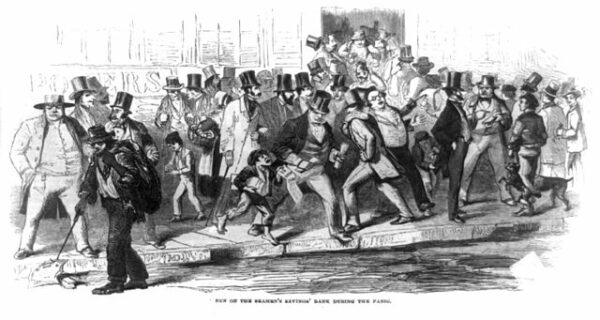On February 3, 1637, the speculative bubble known as Tulip Mania collapsed in the Dutch Republic, marking one of history’s most infamous financial crashes. What began as a thriving market for exotic tulip bulbs spiraled into a speculative frenzy, culminating in a devastating collapse that left many investors in financial ruin.
Tulips were first introduced to the Dutch Republic in the late 16th century, arriving from the Ottoman Empire. Their rarity, combined with their striking colors and patterns, made them a coveted status symbol among the wealthy. As demand grew, so did prices, giving rise to a speculative market in which bulbs were bought and sold at rapidly inflating values. By the early 17th century, this trade had become a frenzied financial phenomenon, with tulip bulbs frequently changing hands multiple times before they were even planted.
At the peak of Tulip Mania, the market evolved into a form of futures trading in which contracts were exchanged for bulbs that had not yet been harvested. Buyers wagered enormous sums on the expectation that prices would continue to rise indefinitely. This fervor was not limited to the wealthy elite—merchants, artisans, and even farmers eagerly entered the market, hoping to profit from the seemingly unstoppable boom.
By late 1636, tulip bulb prices had reached extraordinary levels. The rarest varieties, such as the famed ‘Semper Augustus,’ were worth more than opulent homes in Amsterdam. Ordinary people abandoned their traditional occupations to engage in tulip speculation, convinced that the market would never falter. Informal trading centers sprang up in taverns and market halls across the Dutch Republic, where contracts were signed over drinks and fortunes were amassed overnight. The spectacle attracted foreign speculators, further inflating prices and feeding the illusion of limitless prosperity.
The first signs of instability emerged in early 1637 when buyers began defaulting on their contracts. On February 3, at an auction in Haarlem, demand for tulip bulbs abruptly collapsed, and no one was willing to meet the exorbitant asking prices. This event set off a chain reaction of panic and uncertainty that quickly spread throughout the country. In the days that followed, confidence in the market evaporated. Sellers who had anticipated vast profits were suddenly left with tulip bulbs that had become effectively worthless. Many traders were unable to fulfill their financial obligations, resulting in widespread defaults. Those who had borrowed heavily to invest found themselves bankrupt as lenders refused to extend further credit.
The Dutch government, initially reluctant to intervene, eventually attempted to mediate between buyers and sellers in an effort to contain the crisis. However, the damage was already done. While the broader economy of the Dutch Republic, bolstered by its extensive trade networks, remained resilient, the collapse of Tulip Mania shattered confidence in speculative markets. Many late-stage investors were financially ruined, serving as a stark warning about the dangers of unchecked speculation.
Although historians debate the extent of the financial devastation caused by Tulip Mania, its cultural legacy endures as a cautionary tale of economic excess and irrational exuberance. The episode remains a frequently cited example of market bubbles, drawing parallels to modern financial crises and speculative frenzies. The term “tulip mania” has since become synonymous with the dangers of investing based on hype rather than intrinsic value.
The dramatic collapse of Tulip Mania in 1637 stands as one of history’s earliest recorded speculative bubbles, offering a sobering lesson in the perils of financial euphoria.




